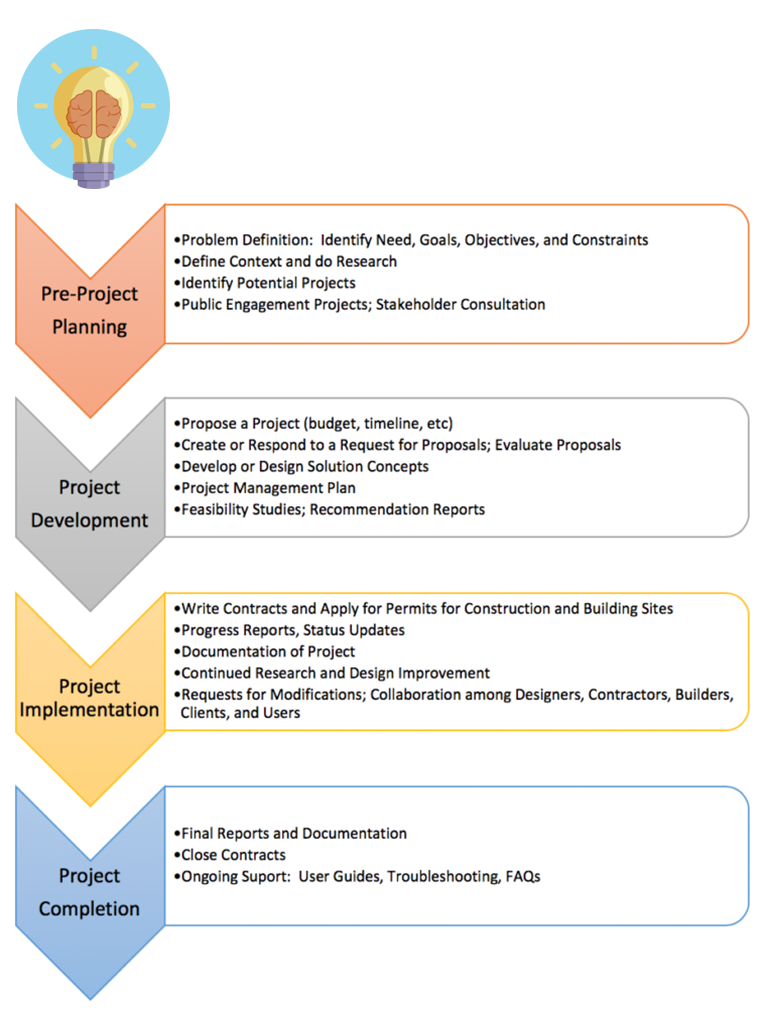Introduction
In our increasingly complex and internationalized workplaces, communication skills are among the most sought-after competencies employers require of job candidates. Every job posting you see will almost certainly ask for candidates with excellent communications skills and the ability to work effectively in teams. The ability to communicate clearly and effectively in written, verbal, visual, and interpersonal contexts is vital for success and advancement. This ability is equally important in any workplace where information must be conveyed using specific and concrete detail along with understanding and tact. Lending these qualities in your interactions with project teams will facilitate relationship-building and collaboration.
No matter how brilliant or innovative an idea may be, if it is not communicated clearly and promoted effectively to the right audience, it will not become a reality. For an innovative idea to move from concept to project to completion requires many stages in the process (see Figure 1), almost all of which require clear communication and effective teamwork.

If teams cannot work and communicate effectively with each other, their final product will fail to meet its potential.
Communication Essentials for Business introduces the key elements of professional style, document design, collaboration, oral presentation, and research skills needed to design productive workplace documents and presentations for a variety of purposes and audiences. In addition, it engages with new technologies like generative AI (genAI) and large language models (LLMs) like Copilot in particular as these are significantly impacting workflows on both individual and organizational levels. Knowing how to leverage the technology to augment your knowledge and skills will enable you to be well-prepared to meet employer expectations once in the workplace.
Reference
Iconfinder.com. Lightbulb image. [Online]. Available: https://www.iconfinder.com/icons/667355/aha_brilliance_idea_think_thought_icon. Free for commercial use.

